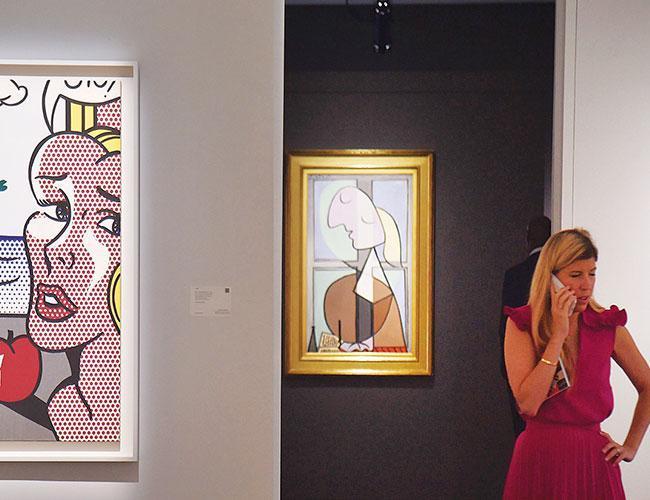
Global buyers have dropped nearly $3 billion on art in New York in two weeks, a record haul rooted in a billionaire thirst for trophies, Chinese purchasing power and growing diversification.
Christie’s chalked up $1.79 billion in sales, including every single item from the iconic collection of the late David and Peggy Rockefeller which, for the first time, spread their flagship May sales across two weeks.
Sotheby’s sold $859 million, including $157.2 million for a Modigliani nude -- the most expensive lot of the season, after Christie’s last November smashed records by selling a single Leonardo da Vinci for $450.3 million.
“It’s colossal. It really is huge and especially after the dip of 2016,” says Georgina Adam, author of the “Dark Side of the Boom: The Excesses of the Art Market in the 21st Century.”
“As long as the auction houses have really managed to do their marketing very well and reach a big audience of collectors, the top end of the market is still doing very well,” says Rachel Pownall, a professor of finance at Maastricht University School of Business and Economics.
Christie’s sold the Rockefeller collection for $832.5 million, breaking the previous record for most expensive private collection -- that of Yves Saint Laurent and Pierre Berge which went for $484 million in 2009.
The Rockefellers’ jewels included a $115 million Picasso, the seventh most expensive artwork sold at auction, and new auction records for work by Claude Monet at $84.6 million and Henri Matisse at $80.7 million.
“The Rockefeller did have an influence. Those were very, very good works and they had this really fantastic provenance,” Adam said. “I think that sort of set the scene for the whole week.”
The 21st century art market is a global one.
Christie’s said 38 countries and six continents took part in its Post-war and Contemporary Evening Sale, which scored seven world auction records for lesser-known artists such as Richard Diebenkorn and Joan Mitchell.
Sotheby’s sale of Kerry James Marshall’s “Past Times” for $21.1 million set a record for Marshall and any living African American artist.
Rap mogul Sean “Diddy” Combs was identified as the buyer by Marshall’s dealer.
“There’s more diversity occurring in the market, which is great,” says Pownall. “If you’re finding more diversity in the buyers, then they’re also looking for more diversity in who they’re buying,” she added.
The super-rich invest in art as a status symbol but also to make money, hoping for big returns on their down payment.
The 1917 Modigliani “Nu Couche (sur le cote gauche)” for example, sold for $157.2 million but had been bought by its seller for $26.9 million in 2003.
“People who spend serious money on this generally didn’t become rich by being stupid,” says Jean-Paul Engelen, co-head of 20th-century and contemporary art at the much smaller auction house Phillips.
The U.S. market is still the biggest, but new money from China is moving in and their aggressive bidding helps to push prices up.
Sotheby’s said a quarter of all works sold at its Impressionist and Modern Evening Sale were acquired by Asian private collectors. Christie’s said 40 percent of buyers at its own Modern Evening Sale were from Asia.
Big names -- namely Picasso, Monet and Van Gogh -- are the most coveted, giving what Adam calls a “bragging aspect” to acquisitions.
“We have very, very rich people fighting over a few trophy assets, a few what they call ‘blue-chip’ artists,” she told AFP.
A strong market means improving supply, as sellers look to capitalize.
“We see... our clients responding to things that are completely fresh to the market, and that have been owned and loved for many, many years,” said Sara Friedlander, Christie’s head of postwar and contemporary art in New York.
“There’s tremendous appetite,” acknowledged Simon Shaw, co-head of impressionist and modern art at Sotheby’s.
But the market as a whole has deviated little over the last 10 years. While the top lots fetch astronomical prices, Adam warns the bottom is falling out of the $50,000-500,000 bracket.
Professional and banker buyers are being priced out, no longer able to afford the art they admire.
“We are seeing is the closure of the mid-market galleries and this is really quite serious,” she warned.